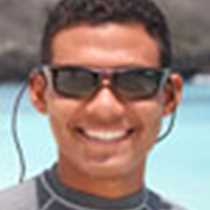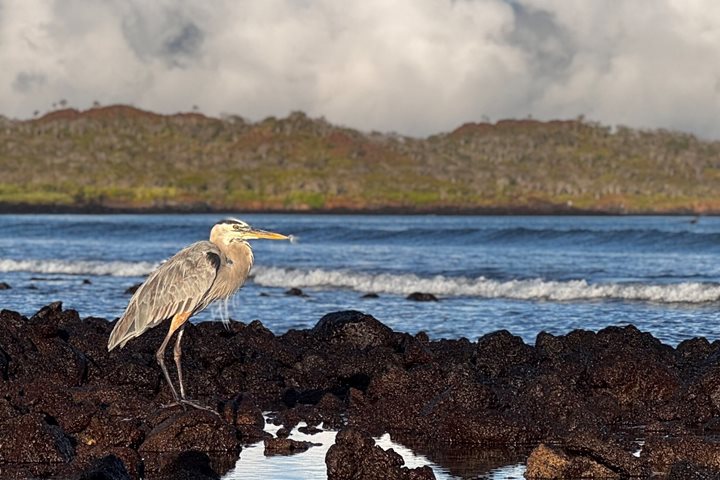Today was our first full day of exploration around the Galapagos islands. During the morning National Geographic Endeavour anchored next to an island very close from the day before.
North Seymour is an island that, after severe magmatic pressure under the crust, was uplifted. So the island itself is very flat with some areas full of sand after all the coral was deteriorated. Seymour is also located in the middle of the archipelago, which makes it a must-stop for sea birds like boobies and frigatebirds, so today we visited this place full of wildlife. Our guests were overwhelmed by the amount of animals found on Seymour: male frigatebirds displaying to attract females, blue-footed boobies courting and parenting their young offspring, land iguanas eating cacti and avoiding the equatorial sun, and sea lions walking around and taking care of their pups.
The visit was very successful and everyone got to understand that the reason why so many people love to come to Galapagos is its proximity to the very tame animals.
Later in the day we moved to another location, Rabida Island. This island was formed by a very explosive eruption that happened thousands of years ago, in which there was a high concentration of iron. This iron was later exposed to the elements of erosion and time, and has gotten a red coloration. In fact the entire beach where we landed is red.
During the afternoon we started with the first deep water snorkeling of the week. Here we found baby sea lions playing in front of our faces, sharks, sea turtles, and colorful fish. Later we enjoyed a short walk along the beach to find some more sea lions, this time moms nursing their pups and resting before they go out to fish again.
The day ended with new experiences for our guests and more joy to their life.







